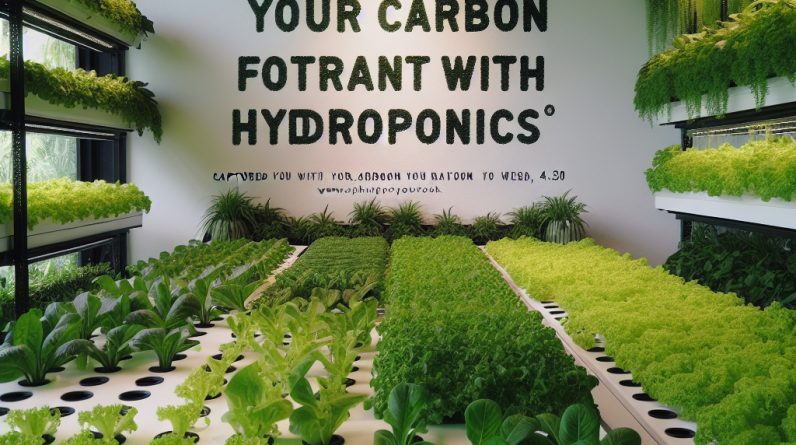
Understanding Hydroponics
What is Hydroponics?
So, let’s start from the basics. Hydroponics is a method of growing plants without soil, using nutrient-rich water instead. It sounds kinda sci-fi, right? But it’s very real and quite efficient! I’ll never forget the first time I learned about it; I was blown away that you could grow fresh veggies using just water and nutrients!
Hydroponics essentially ensures that each plant gets all the nutrients it needs directly through the water, allowing for faster growth and higher yields. Imagine harvesting ripe tomatoes in only a month or so! I mean, who wouldn’t want fresh produce at their fingertips all year long?
When I started diving deeper into hydroponics, I was amazed by the variety of systems available, from simple setups to complex commercial operations. It’s like a whole new world of gardening! By skipping the soil, we can actually reduce the amount of land needed for farming, which is a huge win for our planet!
Reducing Water Usage
Efficiency of Hydroponics
One of the coolest aspects of hydroponics is how much water it saves compared to traditional farming. I remember reading about how hydroponics systems can use up to 90% less water! Think about that for a second; it’s a game-changer, especially in areas prone to drought.
In a hydroponic setup, water is recirculated, so what you put in is almost entirely what you get out. Unlike traditional farming, where much of the water seeps away or evaporates, hydroponics ensures minimal waste. This means I can grow my veggies while being a responsible steward of our precious resources!
Plus, less water means less energy is required for irrigation. It’s like hitting two birds with one stone! Each time I finish a harvest, I feel great knowing that I’m not just enjoying fresh food, but I’m also contributing to water conservation.
Cutting Down on Pesticides
Cleaner Produce
Let’s get real: who likes biting into a crunchy apple and worrying about pesticides? Not me! Hydroponics allows for cleaner growing conditions. Since plants aren’t in soil, there’s a reduced chance for pests like aphids and beetles to take over. This has been a major plus for my home garden.
When I transitioned to hydroponics, I noticed I wasn’t reaching for those chemical sprays as often (or at all). Instead, I could rely on natural methods to keep my plants safe. It’s nice knowing the food I grow isn’t just super accessible, but also healthier than some store-bought options.
Besides personal health benefits, less pesticide use contributes to a healthier environment. So I get to munch on my healthy snacks and help the planet at the same time! That sounds like a win-win to me!
Maximizing Space Utilization
Vertical Gardening
Ah, the joys of limited garden space. When I first started gardening, I felt like I was always fighting for every inch. Then I discovered vertical gardening through hydroponics! By stacking my plants up instead of sprawling them out, I could utilize space in ways I never thought possible.
As a beginner, seeing my vertical system in action was a thrill. I could grow fresh herbs, greens, and more, all in a compact footprint. It’s perfect for urban dwellers! Plus, I can add some flair to my home with aesthetic designs that make gardening look cool!
Not only does this maximize space, but it also makes maintenance a breeze. I have a better vantage point for watering and harvesting! I guess you could say I’m living life on the “upside.” Hydroponics has opened so many doors for me, all while respecting our limited space on Earth.
Seasonal Flexibility
Grow Year-Round
One of the biggest perks of hydroponics is the ability to grow any time of year. Honestly, it feels like magic! I vividly remember my first winter with my hydroponic setup. While my friends were dealing with snow and frozen plants, I was busy enjoying a fresh salad right from my kitchen!
This flexibility means that no matter the season, I can always have my favorite crops. I could grow strawberries in December or basil in July. It’s pure joy to have that kind of availability and control over what’s on my plate, regardless of outdoor conditions!
With climate change and unpredictable weather becoming increasingly common, having the security of a home-grown yield is a comforting thought. Hydroponics empowers me to overcome seasonal limitations and enjoy fresh produce whenever I crave it!
FAQ
1. Is hydroponics difficult to set up?
Not at all! You can start with simple systems using common household items. As you get more comfortable, you can upgrade to more complex setups.
2. Can I use hydroponics indoors?
You bet! Hydroponics systems are perfect for indoor spaces. You can even implement grow lights to ensure your plants get the light they need.
3. What kinds of plants can I grow hydroponically?
You can grow a wide variety! Popular options include leafy greens, herbs, tomatoes, and even strawberries. The choices are endless!
4. How much water does a hydroponics system use?
Surprisingly, hydroponics uses much less water than traditional soil gardening. Most systems are designed to recirculate water, minimizing waste.
5. Do hydroponic plants taste different than soil-grown plants?
Honestly, many people claim they taste better! This is likely due to the efficiency of nutrient delivery in hydroponics, resulting in fresher, more flavorful produce.







